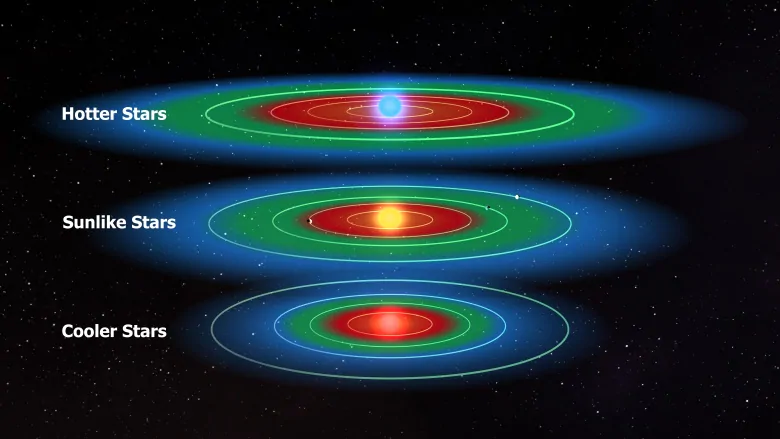'That's super exciting': New study finds this 'mini-Neptune' exoplanet could be potentially habitable

New research suggests K2-18b, a “mini-Neptune” that lies roughly 125 light-years from Earth, could be potentially habitable.
Mini-Neptunes are planets less massive than Neptune, with barely any core or solid surface but with a thick hydrogen-helium atmosphere. However, there has been debate over whether these types of planets could host an environment that could be potentially habitable.
K2-18b, discovered in 2015, is part of a two-planet system, roughly 8.6 times the mass of Earth and 2.6 times the radius. It also lies within the habitable zone around its red dwarf star, a theoretical region where liquid water can exist on the surface of a planet.
The planet has been of particular interest since September 2019 when two independent research teams revealed the detection of water vapour in its atmosphere, marking the first time this had been detected on an exoplanet, a planet orbiting another star.
Though there was some excitement over the announcement, discussion arose as to whether or not K2-18b was indeed potentially habitable, with some astronomers arguing that conditions on the planet — such as its high pressure and temperature — would make this world unsuitable for life. Just because there was water vapour didn’t mean it was potentially habitable.
However, the new study published in the Astrophysical Journal Letters, suggests that, under the right conditions, K2-18b could be indeed potentially habitable.
The team of astronomers collected data on the planet’s atmosphere, mass and more using the September 2019 findings as well as earlier studies. They then ran through several different scientific models that could account for their findings.
They finally boiled it down to three:
- A rocky world with a core that was 94 per cent iron with little water and a thick atmosphere of hydrogen-helium.
- A mini-Neptune with an Earth-like core and more than 54 per cent water with a significant hydrogen-helium atmosphere .
- A water world with a small Earth-like core and almost 90 per cent water with very little helium-hydrogen.
It’s the third scenario that surprised the researchers: it showed such a planet would be potentially habitable.
“Until the very end, even I didn’t know this was possible — that you could have liquid water on this planet. And I do this for a living,” said Nikku Madhusudhan, lead author of the new paper and an astronomer with the University of Cambridge’s Institute of Astronomy in the United Kingdom. “It was quite surprising.… We didn’t believe it for the longest time.”
Because the findings were such a surprise, the team did rigorous followup models.The results also suggested the atmospheric pressure would be amenable to life as would the “room-like temperature,” Madhusudhan said.
“My students joke that we tried for the longest time to make the habitability solutions go away,” he said. “But at the end of the day, we just couldn’t make them go away.”
WATCH | Water vapour found on K2-18b:
[embedded content]
Björn Benneke, an assistant professor at the Université de Montréal, who was the lead author of one of the 2019 papers that found K2-18b’s atmosphere contained water vapour, said the study was “exciting.”
“Among all the planets that we have found around other stars — something like 4,000 planets — 80 per cent … are in this category,” he said, referring to the mini-Neptunes. “It’s very important if you want to understand planets as a whole, if you want to understand why the Earth is like the Earth, if you want to understand why Neptune is like Neptune, that we understand at least the most common type of planet.”
‘Super exciting’
Trying to collect data on atmospheres of planets that are relatively small like Earth is difficult to do, as special telescopes are needed. But it’s easier with larger planets like mini-Neptunes.
And now that the door seems to be opening on finding larger planets that are potentially habitable, there’s the possibility of doing more observations of atmospheres on these mini-Neptunes.
“If there is one big-picture, philosophical conclusion to take away from this, it’s that we’ve shown for the first time planets … as large as this can also have habitable conditions,” Madhusudhan said. “Our search space has increased by a whole lot in the search for habitable planets. To me, that’s super exciting.”
Still, he’s looking forward to followup studies by independent astronomers since they can’t say for certain that K2-18b is habitable, just potentially habitable. But he said, that doesn’t mean astronomers should discount planets of this size in their search for habitable worlds.
“We’ve just opened an entire parameter space in our search for life. So to me, that’s a momentous step forward.”





